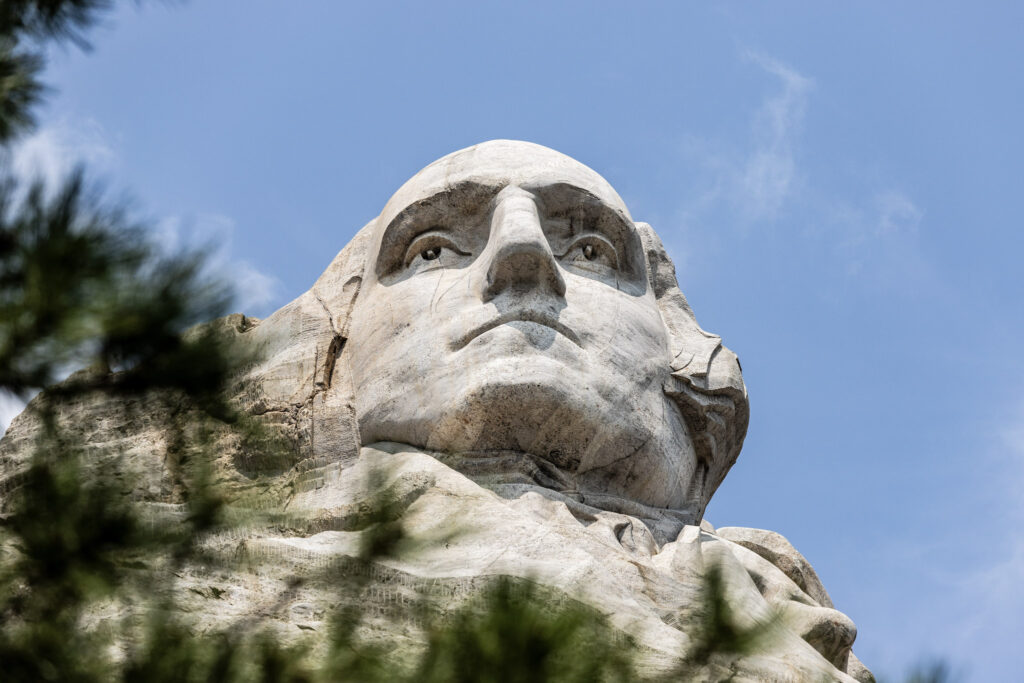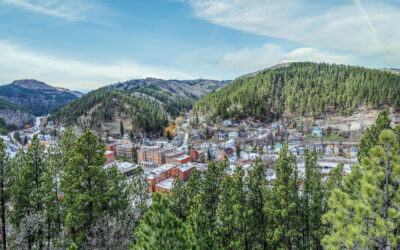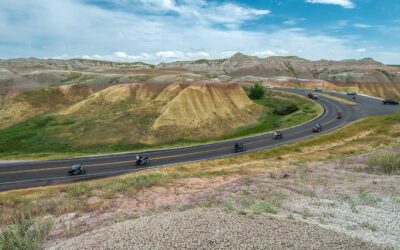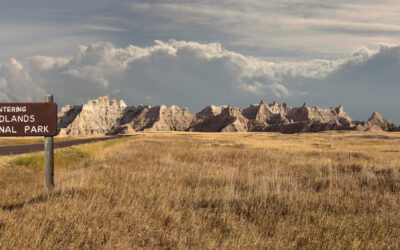Mount Rushmore, a symbol of American history and democracy, is carved into the granite face of the Black Hills in South Dakota. This monumental sculpture, depicting four esteemed U.S. presidents, was authorized by Congress on March 3, 1925, and completed in 1941 after 14 years of laborious work. The vision of historian Doane Robinson and sculptor Gutzon Borglum, Mount Rushmore attracts millions of visitors and has become an indelible part of American culture and identity.
Key Takeaways
- Mount Rushmore was the brainchild of historian Doane Robinson, who sought to create a monument to boost tourism; sculptor Gutzon Borglum brought the vision to life on a mountain chosen for its optimal granite quality and sun exposure.
- The original design of Mount Rushmore underwent significant changes during its construction, leading to an ‘unfinished symphony’ that still captivates visitors with its grandeur and historical significance.
- Beyond its historical and patriotic value, Mount Rushmore has permeated American pop culture, featuring in films and celebrations, and remains a major tourist attraction, especially noted during its 70th and 75th anniversaries.
Carving a Legacy: The Creation of Mount Rushmore
The Spark of Inspiration: Doane Robinson’s Vision
The genesis of Mount Rushmore can be traced back to the early 1920s when historian Doane Robinson conceived a grand monument to draw visitors to South Dakota’s Black Hills. His collaboration with sculptor Gutzon Borglum transformed this vision into a project that would etch the faces of four esteemed presidents into the granite cliffs of Mount Rushmore.
Choosing the Canvas: Why Mount Rushmore Was Selected
Mount Rushmore was chosen for its solid granite composition and its prominence within the landscape. The site selection was a strategic decision, taking into account the quality of the granite and the mountain’s southwest orientation, ensuring the sculpture would bask in the sunlight.
Sculpting the Presidents: The Artistic and Engineering Feat
Carving the 60-foot high likenesses of the presidents was an engineering marvel. Borglum and his team employed dynamite and precise drilling techniques to shape the mountain, a process that spanned 14 years and involved hundreds of workers.
The Unfinished Symphony: Deviations from the Original Design
The original design for Mount Rushmore was much more ambitious, including the presidents from head to waist. However, due to funding constraints and Borglum’s death in 1941, the project was declared complete with just the heads finished, leaving an unfinished symphony in stone.
Mount Rushmore in American Culture
The Spark of Inspiration: Doane Robinson’s Vision
Mount Rushmore has transcended its physical form to become a cultural icon in the United States. Its depiction in various forms of media has cemented its status as a symbol of American ingenuity and the nation’s historical legacy. The monument’s allure has drawn it into the realm of Hollywood, where it has featured in numerous films, including the classic ‘North by Northwest’. Its presence in pop culture extends to comic books and television series, illustrating its widespread recognition and appeal.
Choosing the Canvas: Why Mount Rushmore Was Selected
As a backdrop for storytelling and a site of monumental significance, Mount Rushmore’s selection as a canvas for these cultural expressions is no coincidence. Its grandeur and the ideals it represents resonate with audiences, making it a fitting setting for narratives that touch on themes of patriotism and national identity. The site’s integration into popular culture is a testament to its enduring relevance and the powerful imagery it conveys.
Sculpting the Presidents: The Artistic and Engineering Feat

The artistic and engineering marvel that is Mount Rushmore continues to inspire awe and curiosity. The intricate process of sculpting the presidents’ faces into the granite cliffs is a narrative of human achievement that has been celebrated in various forms of media. This narrative not only showcases the technical prowess involved but also the creative vision that guided the monument’s construction.
The Unfinished Symphony: Deviations from the Original Design
Mount Rushmore’s journey from conception to completion is a story of ambition and compromise. While the original design underwent changes, the final result is a testament to the adaptability and determination of those who worked on it. The deviations from the initial plans are part of the monument’s history, adding layers to its story and its cultural significance.
In conclusion, Mount Rushmore stands as an enduring symbol of American greatness and the indomitable spirit of its people. Visitors from around the world are reminded of the ideals and principles that have shaped the nation and continue to inspire generations of Americans.
Frequently Asked Questions
When was Mount Rushmore officially authorized to be built and how long did it take to complete?
Mount Rushmore was authorized by the United States Congress on March 3, 1925, and the carving of the faces began in 1927. It took 14 years to complete the sculpture, with completion in 1941.
Why was Mount Rushmore selected as the site for the monument?
Mount Rushmore was selected because of its solid granite composition, prominence within the landscape, and its southwestern exposure which maximizes sunlight. The original idea was to carve into the Needles area of the Black Hills, but the granite quality was poor and there was opposition from environmentalists and Native American groups.
How does Mount Rushmore differ from its original design plans?
The design plan for Mount Rushmore changed significantly from its conception to the finished product. The original design was more elaborate, but due to funding constraints and the death of the lead sculptor Gutzon Borglum, the project was completed with just the heads of the four presidents instead of the intended full figures.






